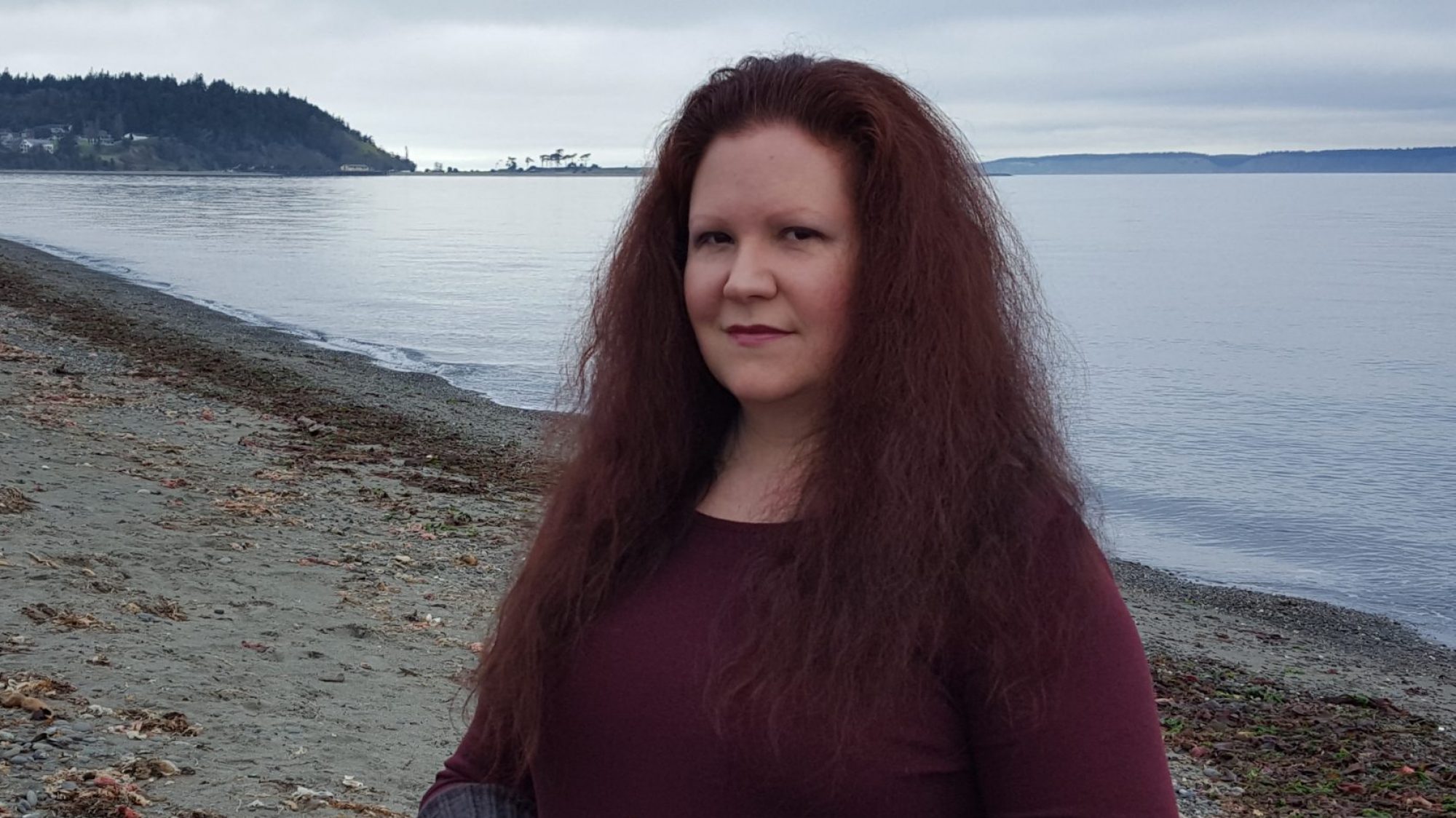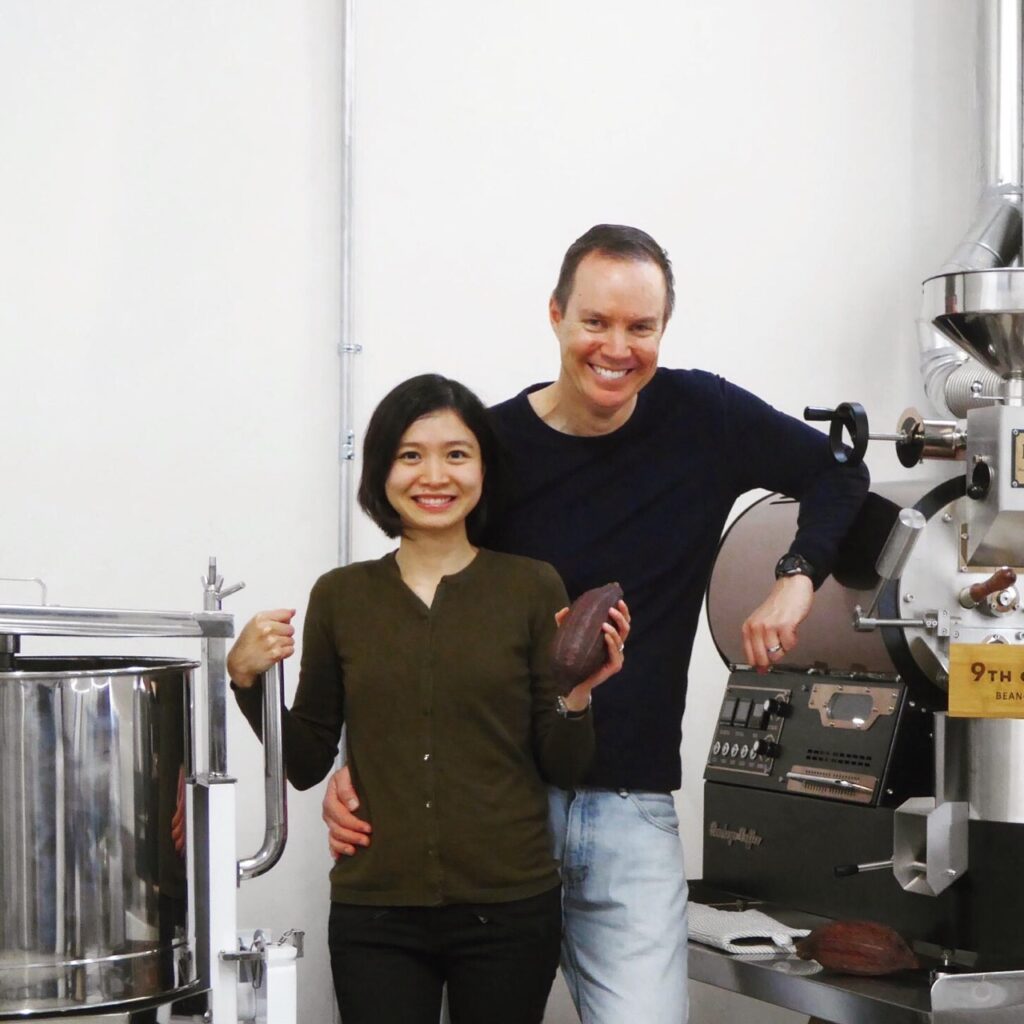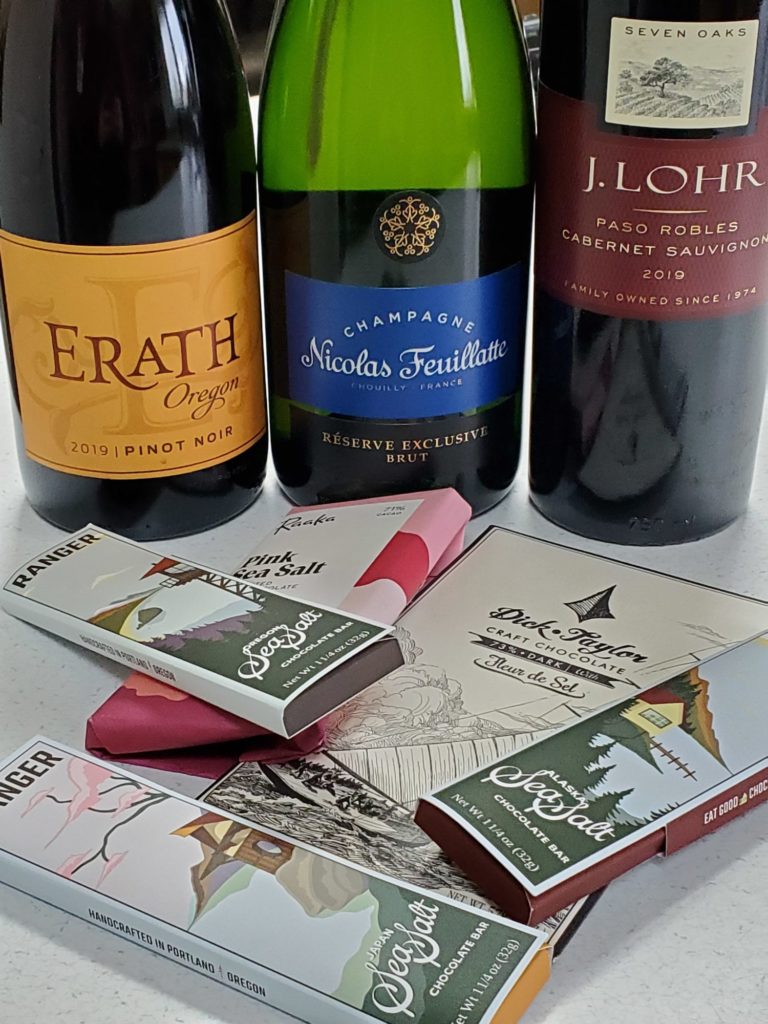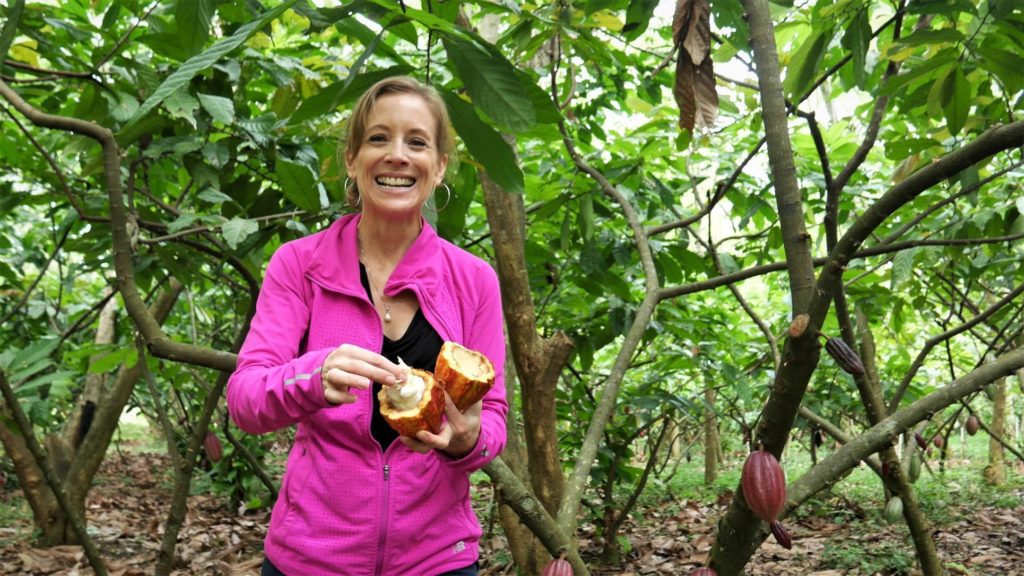Interview with Lan Phan of 9th & Larkin Chocolate
I'm delighted to bring you this interview with Lan Phan bean-to-bar chocolate maker of 9th & Larkin Chocolate located in San Francisco, CA. From their lovely packaging to their delicious chocolate bars, 9th & Larkin is a delight to have in one's own chocolate stash!
In this interview we get to learn more about 9th & Larkin's bar wrapper design, Lan Phan's creative inspiration and so much more. Enjoy!
Victoria Cooksey: What is your first memory involving chocolate before knowing about craft chocolate?
Lan Phan: My first memory with chocolate was probably when I was 4 years old, tried making chocolate milk with a piece of bonbon. After that was teatime with my mom. It was very simple, just a little cup of tea, and a little piece of chocolate or a tiny cookie, and I would retell her story or book she read to me the previous day. I love teatime with my mom.
VC: When and how did you become interested in making bean-to-bar chocolate?
LP: 2014, I was working my day job as an analyst. There was one project that I interacted with lots of people in manufacturing startups companies in the SF Bay Area. They were making all sorts of things, from electric skateboards to personal devices. They were all excited about what they were doing and they were full of energy. The idea of making something tangible was really inspiring, it made me want to make something by myself, with my hands. So with curiosity of how to make chocolate from scratch and the love of eating chocolate, we started experimenting in our home kitchen soon after.
VC: What's your process for choosing a cacao origin to experiment with?
LP: We usually get samples of beans and test to see how we like them, sometimes out of curiosity when we see a new origin and wonder how they taste, other times because we tasted bars made with that origin, liked it and wanted to see what we can bring out from these beans.
VC: Your bar packaging is always so lovely. What was the inspiration for the colors and design?
LP: The design was inspired by the cacao pod. It wasn't a random splash of ink. We painted a cacao pod, and rolled it on a paper to create these patterns. The patterns are then transferred to the wrapper by screen printing. The colors reflected the tasting profile of each origin, such as the bright copper patterns on the Tanzania bar reflects the bright chocolate background, with cherries, berries notes. We tried to choose the color as close as possible to match with the flavor profile of the beans.
VC: Your chocolate bars always look fantastic! Any tips on tempering or bar mold prep for improving the shine on the finish bar?
LP: Thank you! I always polish the moulds and warm them up so the surface is similar temperature to the tempered chocolate before pouring the chocolate into the mould.
VC: What's has been your greatest challenge with making bean to bar chocolate?
LP: From a business standpoint, the biggest challenge is probably how to get people to know about us. We are so small, and don't even have our own store that people can just stop by, taste and shop, so it can be very tricky. I remember in 2020 when Covid started and so many makers said on Instagram that their sales dropped significantly and they had to rely solely on their online store, that is actually our normal. From a technical standpoint, it is tempering. After 5 years, I still learn something new about it and probably still far from being able to fully understand the tempering machine that we use yet. I still get this scratching head, why moment sometimes.
VC: How do you like to enjoy chocolate on an average day? How does that change on holidays and special occasions?
LP: Just a little piece here and there. I consume less chocolates than Brian, he snacks on chocolate throughout the day. During the holidays and special occasions, it would be a bit more as besides eating chocolates, we have cakes, cookies that we make with chocolate. We also buy chocolates as gifts to each other, haha, yes we make chocolates but still buy lots of chocolates for ourselves. And we'll try all of these chocolates when opening our presents on Christmas Day.
VC: What continues to inspire and drive you forward with chocolate making?
LP: I find chocolate fascinating. It's never bored me. From tackling different harvest with, sometimes, quite different flavor profiles, to how to keep chocolate safe during shipping in summer. It never gets old. And through making chocolate, I get to learn a lot of new things that otherwise I wouldn't have a chance to, and get to meet so many wonderful people. I enjoy what I am doing, and that is very important to me.
VC: At the end of the day what does chocolate mean to you?
LP: To me, chocolate is not merely food or snack. It is a fond memory of my childhood. It gave me comfort and energy on the way home from late night class. And now when I get to make it, it is the connection between me and my home country. Being able to use Vietnamese beans to make chocolates here in San Francisco means a lot to me. It is a way that I can share a little of my homeland with you and everyone.
Thank you so much for this interview Lan!





